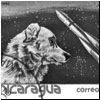| |
. |
The USSR orbits second artificial satellite with dog Laika onboard On November 3, 1957, the USSR stunned the world with a new space sensation -- the launch of Sputnik-2 carrying a dog onboard. The Space Age had barely started less than a month before, with the launch of the first Soviet satellite on October 4, 1957. The 84-kilogram Sputnik-1 looked very heavy compared to the U.S. spacecraft under development at the time. Now four weeks later, the Soviet press boasted about the 508.3-kilogram spacecraft carrying the first-ever live passenger -- a dog named Laika. However it soon became clear that the animal would not return. The Cold War politics left no time for designers to develop a reliable life-support system, not to mention the heat shield to protect a spacecraft from a fiery reentry. Years after Sputnik 2 burned up in the atmosphere, conflicting scenarios of Laika's death were circulating in the West, along with few other misconceptions about this historic mission.
Perched on top of a giant rocket, a tiny window could provide a glimpse of the home planet to the first creature ever sent to orbit the Earth. |
 |
||||||||||
| DEVELOPMENT HISTORY | ||||||||||||
|
With the launch of the first artificial satellite on October 4, 1957, and resulting world-wide fanfares at full blast, Korolev dismissed many of his staff at OKB-1 design bureau for a long overdue vacation. As remembered by Boris Chertok, one of Korolev's associates, in the aftermath of the first Sputnik the main business of the day for remaining employees at OKB-1 was drawing up lists for government awards and bragging to each other about upcoming bonuses. (261) This exuberance would not last, however. |
||||||||||||
|
Roots of the Sputnik-2 project At the time of the decision to launch Sputnik-2, Korolev had a sophisticated research satellite (Object D) in the works. However, it could not possibly be ready for takeoff before December 1957, therefore it was destined to become the third satellite. At the same time, a mere repetition of the previous launch was not good enough. To meet the November anniversary deadline, an "entirely new" concept for a Sputnik carrying a dog had emerged, most sources claim. Exactly how "new" was still opened to debate half a century later. |
|||||||||||
| TECHNOLOGY | ||||||||||||
|
|
The core of the second satellite would be a dog cabin, measuring 0.8 meters in length and 0.64 meters in diameter, it derived from the retrievable container, used to launch dogs onboard research rockets. The aluminum cabin was equipped with a television camera, along with sensors to measure ambient pressure and temperature, as well as the canine passenger's blood pressure, breath frequency and heartbeat. These instruments allowed ground controllers to monitor how the dog functioned and died in space. A small window was cut in the forward bulkhead of the cabin. |
|||||||||||
|
|
To help maintain proper temperature in the dog cabin, the transfer cone, which connected the satellite with the rocket, was thoroughly polished, additional thermal blanket were added and copper panels were installed on the telemetry boxes. To maximize scientific payload of Sputnik-2, some flight control equipment was removed from the rocket. For the same purpose, the flight profile was modified to ensure maximum use of onboard propellant. |
|||||||||||
| THE MISSION | ||||||||||||
|
"All traditions developed in rocket technology were thrown out (during work on the second satellite)," wrote Boris Chertok, deputy to Sergei Korolev. "The second satellite was created without preliminary design, or any kind of design." According to Chertok's memoirs, most elements of the spacecraft were manufactured from sketches, while engineers moved into production facilities to assist workers on site. (62) Only three elements of the satellite had been built with the use of blueprints. Both, a mockup and a flight version of the satellite had been built in parallel. |
||||||||||||
 |
The launch vehicle carrying the second Soviet satellite with dog Laika onboard lifted off at dawn on Nov. 3, 1957. As telemetry later revealed Laika's heart was beating 260 cycles per minute, or three times higher than normal during the ride to orbit. Frequency of her breath also rose 4-5 times above usual. Overall, however, the dog survived the launch unscathed. Russian sources revealed that although probably terrified Laika survived in orbit for four days and then died when the cabin overheated. According to other sources, the severe overheating and the death of the dog occurred five-six hours after Sputnik-2 had reached orbit. |
|||||||||||
 |
The news about the Soviet satellite carrying a dog was stunning enough to trigger an analysis by the US Central Intelligence Agency, CIA. A resulting memorandum entitled "SPUTNIK II, With or Without Dog?" was issued on March 17, 1958. It stated that although "available evidence does not permit a positive determination that this satellite in fact did carry an animal," the agency officials "believe that SPUTNIK II did carry a live dog." |
|||||||||||
| LAIKA: HISTORY AND A LEGEND | ||||||||||||
Myths and reality about Laika's mission at a glance:
|
||||||||||||